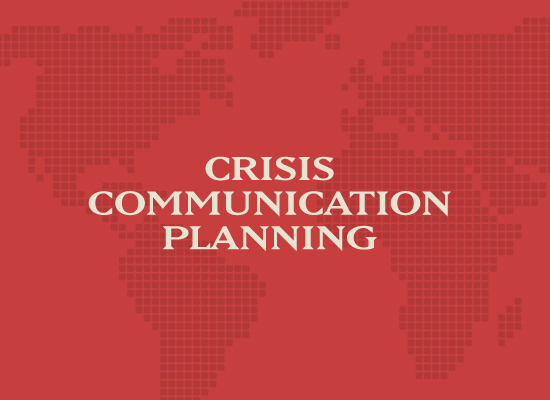
Crisis planning is something every business knows they should do. In the rush of our regular day, it seems overwhelming and often gets pushed to the side...
Then, a crisis hits.
Begin the process with a crisis communications plan. It can help you take the first step and get organized to address other areas of your business. Here are a few steps to help with the process.
Determine who should be a part of the crisis communications team. You will need:
- A leader: someone who is authorized to make decisions regarding what is being said to whom
- An organizer: someone to keep track of all messages and keeps everyone on the same page
- External messaging: this person works with media and posts to social media
- Internal messaging: this person keeps employees informed
- Stakeholder relations: the person who keeps your customers, board members and investors informed
Add others to your planning group as you see fit. For example, you may want to designate one person to review and edit all messages before they go out.
For internal communications
- Prepare in advance for different scenarios such as an extreme weather event or an accident.
- Develop messages that allow you to communicate early and often. Have a town hall meeting; send regular emails or text messages.
- Anticipate questions. You know your team; what will they want to know?
- Stay focused on what employees need to know and do; consider how they may be feeling about the crisis.
- Stay true to your corporate values to avoid bias, marginalizing groups or sharing misinformation.
- Be clear, calm and concise. Avoid industry jargon and difficult medical or scientific terms.
- Research reputable and reliable resources of information for your crisis scenarios such as the National Weather Service or the Centers for Disease Control & Prevention.
- Dedicate a place where your employees can go for the latest information such as an intranet page. Make sure it is mobile friendly.
- Assign a leader who can be a consistent voice throughout the crisis. This leader may change depending on the crisis at hand.
- Involve your managers by sharing key messages.
- Show you care about what is happening to your employees by sharing information about local resources such as support services.
- Provide a way for employees to respond. Answer their questions quickly and share those questions and answers with the entire team.
External communications is about story-telling.
Consider how your company and industry are connected to each crisis scenario. In the case of COVID-19, the transportation industry has demonstrated the vital role it plays in keeping store shelves stocked and necessary resources at hand. Share a story about how your company has been involved and has overcome a previous crisis.
If the crisis is local, share a story about how your company is assisting its neighbors. Are you hosting a fundraiser? Are you helping move debris after a storm? Are you providing shelter for those temporarily displaced? Let the rest of the world know what you’re doing to be a good neighbor.
Do you have an employee who volunteers with any crisis organizations such as the Red Cross? Highlight their involvement in a story.
Communications is vital for weathering a crisis. The more you practice, the better you will be. And once you have tackled communications, planning for your other business areas will be easier.
Source: Ragan Consulting
ClickToAddCategories
No categories have been created yet.
Community
Company Updates
Driver Recruitment
Investor News
Transportation Safety
Claims
Driver Management
Driving Techniques
Distracted Driving
Seasonal Driving Tips
Sharing the Road
Health & Wellness
Injury Prevention
Regulations
Security & Cargo Theft
Vehicle Inspections
Weather Conditions
Workplace Safety
Workers Compensation
Done